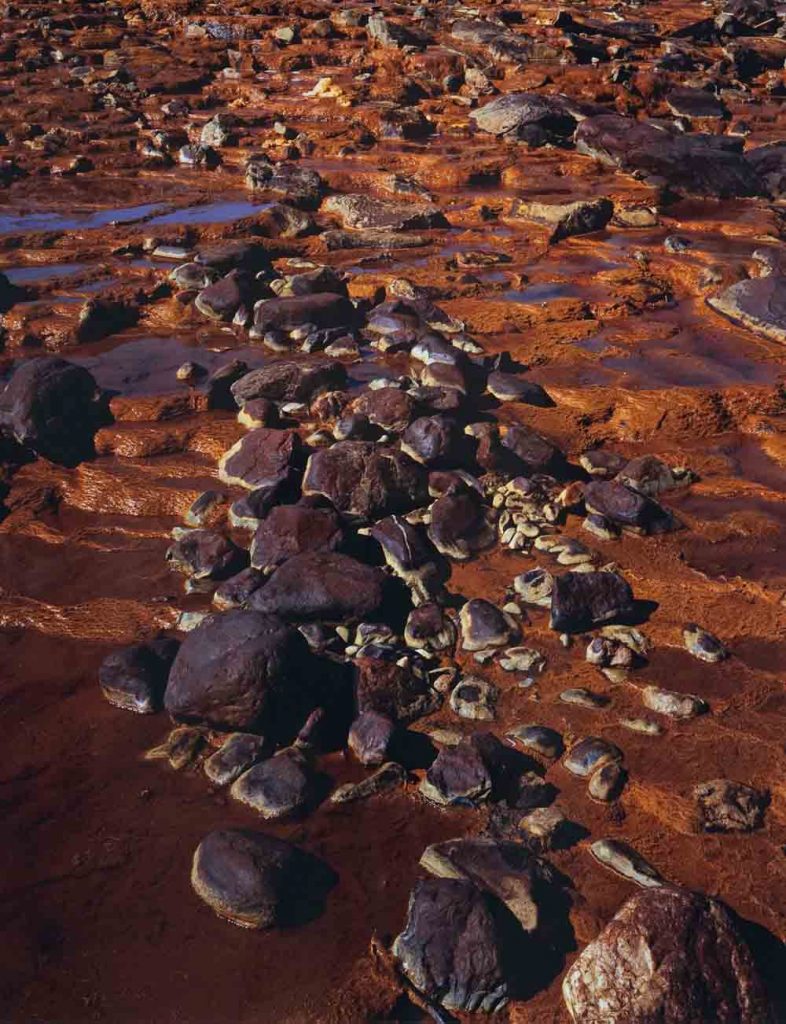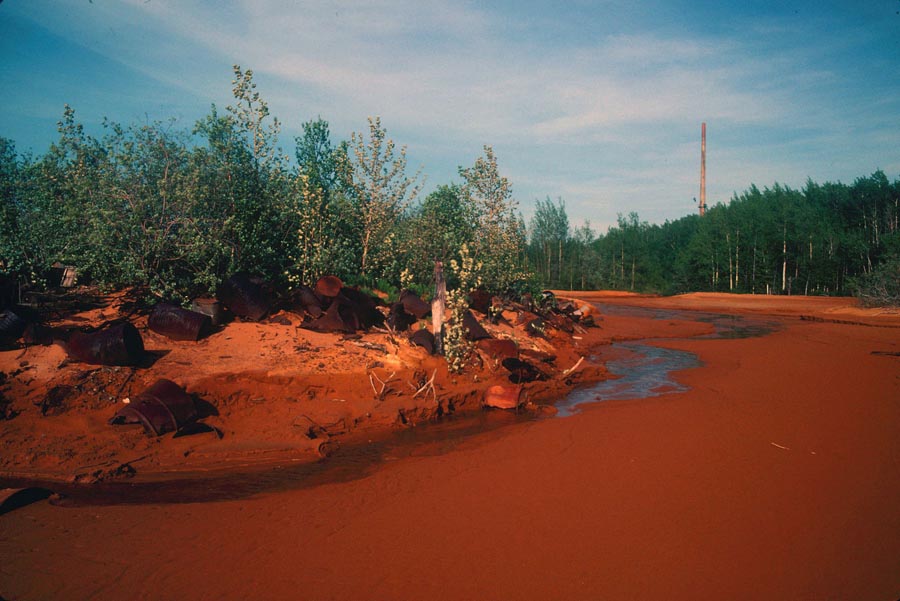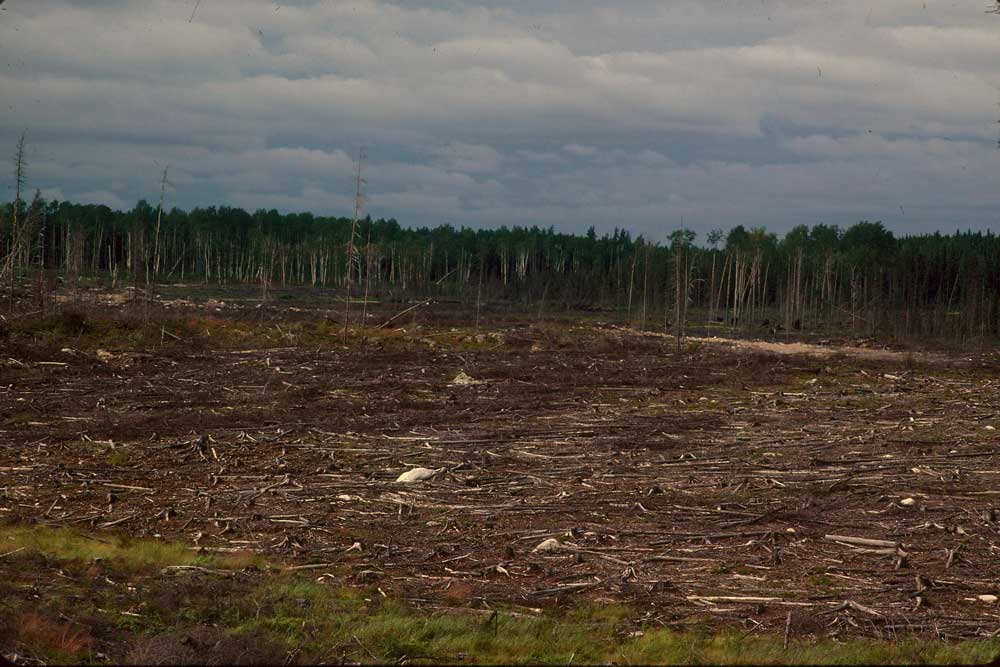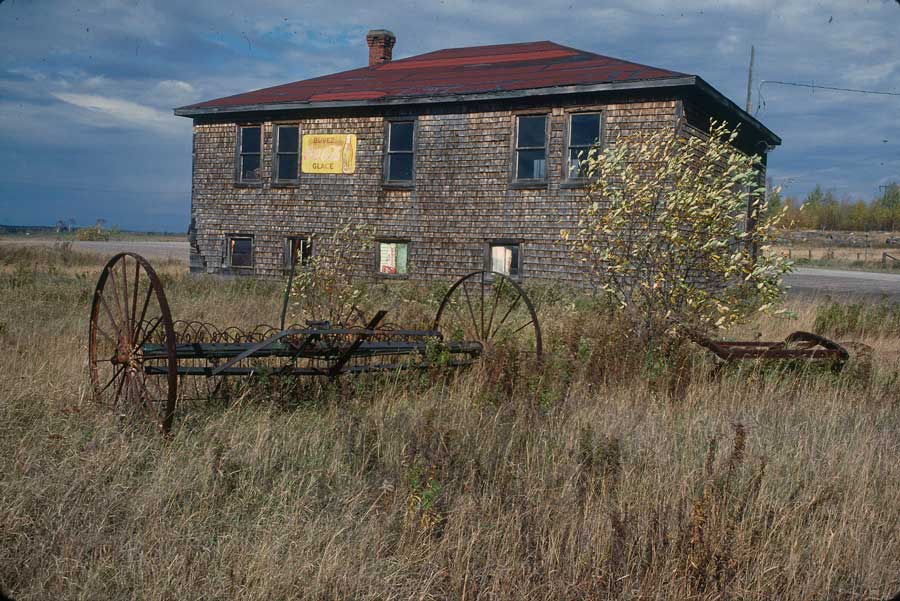The Impact on Nature
Industry and agriculture allowed for the social and economic development of the region, a development that has also had a harmful impact on nature.
This photograph shows the damage caused by the on-site impoundment area Aldermac, found close to Rouyn-Noranda. The Aldermac mine was in operation from 1932 to 1943. The site is abandoned, and the mine tailings (or residue) that are left transform into sulfuric acid, which affects the local plant and animal life. Because this site represents a public health risk, restoration work is underway, but only since the late 2000s.
At the beginning of colonization, land-clearing and mineral exploration caused several forest fires of human origin, diminishing the variety of species and forest landscapes, causing an increase in the outbreaks of spruce budworm epidemics. The waterways were equally exploited for logging and the production of hydroelectricity, limiting the fluctuation of water levels as well as flooding and erosion, which are needed in the maintenance and growth of certain tree species.
It also needs to be mentioned that agricultural colonization wasn’t successful for everyone for many reasons: lack of experience and/or support, unproductive land, economic crises, etc. After the 1950s, the progressive abandonment of agricultural lands led to the spreading of willow and alder trees on a large portion of the territory, delaying the return of the natural forests.
To sum it up, the colonization and the development of the region fashioned new communities but also permanently transformed the territory, sometimes with harmful repercussions for plants, animals and human life.





